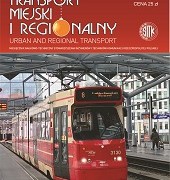Abstract 11/2017
Table of content
Bryniarska Zofia –Assessment of passengers’ satisfaction on the innovative solution in the public transport in Krakow
Piotr Wiśniewski – Design and implementation of a decision support system for urban transport crisis management
Katarzyna Solecka, Damian Maderak –Evaluation of urban public transport system in Cracow by elderly people
Krystian Banet, Andrzej Szarata –Shaping of optimum urban public transport system in middle-sized cities – the city of Częstochowa case study
Abstracts
Bryniarska Zofia
Assessment of passengers’ satisfaction on the innovative solution in the public transport in Krakow
Abstract: Tram communication network creates the basic structure of urban public transport connections in Krakow. Coaxial line layout allows passengers to travel relatively fast to the city center, but is not immune to interference in tram trains traffic. Planned extension of the tram network includes, among others: construction of sections between existing lines. This type of connection was launched in 2015 and enabled implementation of an innovative solution: an integrated interchange between urban public transport network, agglomeration railway and long distance railway transport which is also available for pedestrians and cyclists. The importance of this interchange is difficult to overestimate, especially for the inhabitants of southern districts of Krakow, as well as the possibility of conducting alternative routes of the tram lines fixed as well as run during the renovation and modernization of the tram network or breakdown. The article presents results of marketing survey on the overall satisfaction of this new tramway connection, estimation of passenger journey time, assessment of selected quality features and assessment of the new connection and tram stop on the bridge. There are also presented some proposals of using the connection and tram stop during the reconstruction of the railway line between stations: Kraków Główny and Kraków Płaszów.
Key words: tram transport service, urban public transport, overall passenger satisfaction, interchange
Piotr Wiśniewski
Design and implementation of a decision support system for urban transport crisis management
Abstract: Public transport is exposed to many internal and external factors which can disturb its operation. This situation affects in particular urban rail transport as it offers lower flexibility in terms of route designation, because of the need to use complex infrastructure. In this paper, a solution supporting real-time tramway transport management, with respect to crisis situations, was presented. The research included primarily: the functional analysis of urban transport, the selection of an appropriate mathematical representation along with adapting it to real-life requirements, formulating the profit function and searching algorithms as well as the development of the application that implements the solutions mentioned above. The proposed formal model of a tramway network was based on a mixed graph where vertices correspond to decision points while edges represent specific track sections. In addition, the mathematical model includes also the profit function used to generate the recommended alternative route and the set of forbidden paths which cannot be designated in real-life situations because of the rail system specifics. The decision support system designed as a part of this research is proposed as a support tool for people responsible for the current public transport vehicle traffic. The proposed application includes model data saved in a set of source files and enables the user to select one of four algorithms which can be used in case of a crisis situation.
Key words: rail transport, tramways, graph theory, decision support
Katarzyna Solecka, Damian Maderak
Evaluation of urban public transport system in Cracow by elderly people
Abstract: The article presents evaluation of urban public transport system in Cracow by elderly people. Elderly people play an important role in the society. In order to satisfy their basic needs related to life in cities and agglomerations it is needed to implement changes and improvements in various life aspects. Elderly people often travel by public transport because their health decreases their predispositions to travel by car. Public transport is often the only one transport mean which they can use. Some conditions, both in terms of transport means equipment and infrastructure, have to be improved in order to have more accessible public transport. Task of public transport management is to help elderly people to meet their basic needs in terms of public transport journeys. The survey among elderly people was carried out in Cracow in order to get an information on elderly people’s needs and expectations related to public transport, as well as the level of their satisfaction with the public transport services. The survey was carried out at selected bus and tram stops. The article shows detailed analysis of the survey results. Basing on the survey results changes and solutions for improvement of the urban public transport to make it more senior-friendly have been proposed. Moreover the article raises the issues of society aging in Poland, Małopolska Region and Cracow.
Key words: elderly people, disabled people, urban public transport
Krystian Banet, Andrzej Szarata
Shaping of optimum urban public transport system in middle-sized cities – the city of Częstochowa case study
Abstract: The article focuses on the optimal design problem of urban public transport network in middle-sized cities, presenting results of the sample case study in the Czestochowa city, Poland. Simulation analyses have been conducted on the transportation model of Czestochowa and included 9 possible variants (cases). The variants were formulated based on 2 the following criteria: spatial accessibility of urban public transport network (3 scenarios) and temporal service frequency (5 scenarios). Simulations were conducted for the full 4-step demand model, and allowed us to observe the influence of changes in accessibility and frequency assumptions on network performance. Comparison of variants was made based on 3 performance parameters: total number of passengers, operating service costs and average journey times. Based on these, the optimal variant was selected, which in case of the middle-sized city like Czestochowa turned out to be an intermediate solution in terms of both design criteria. The best results have been obtained for medium rates of service frequency and network accessibility.
Key words: urban public transport, vehicle routing problem, macroscopic model

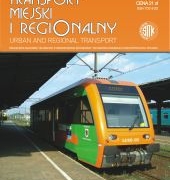 SITK RP
SITK RP 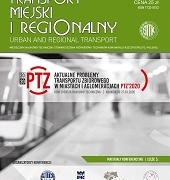
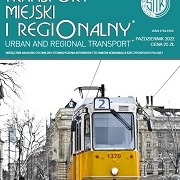 SITK
SITK 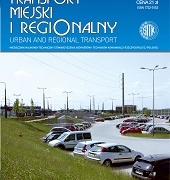 SITK RP
SITK RP 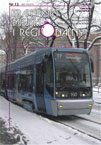 SITK RP
SITK RP 